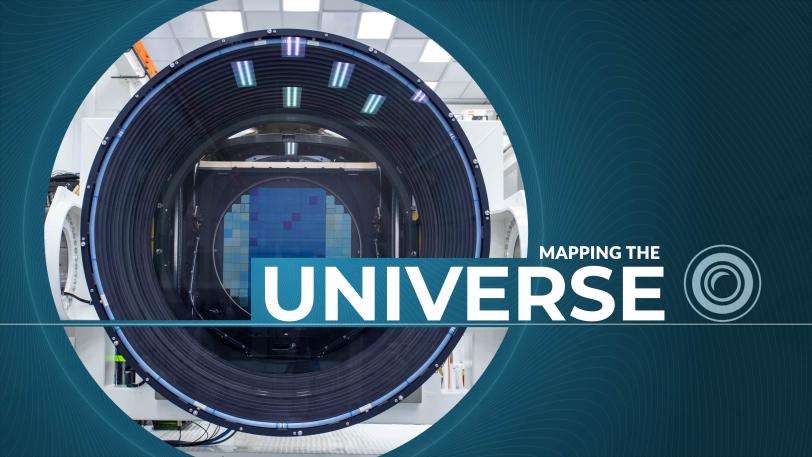Rubin Observatory’s Legacy Survey of Space and Time

LSST Camera explainer
Learn More About the LSST Camera for the NSF-DOE Vera C. Rubin Observatory in Chile. The U.S. Department of Energy’s SLAC National Accelerator Laboratory led the construction of the LSST Camera – the largest digital camera ever built for astrophysics and cosmology.
Olivier Bonin/SLAC National Accelerator Laboratory
Gravitational lensing is our best tool for finding dark matter, which makes up about 27 percent of the universe. LSST will benefit from Rubin Observatory's power and large field of view, which will enable us to see weaker lenses, which are more common.

Current composition of the universe
Current observations indicate the ordinary matter that we see all around us makes up only 5 percent of our universe. The data collected for the LSST will enhance our understanding of the rest of the universe – dark matter and dark energy.

Dark energy makes up two-thirds of the universe and drives its expansion. With LSST data, scientists will be able to map out in extraordinary detail how the universe has expanded over time, yielding new insight into the nature of dark energy.

LSST will allow scientists to undertake a thorough exploration of our solar system with two goals in mind: learning how it originally formed, and protecting Earth from hazardous, near-flying asteroids.

Individual stars in the Milky Way and nearby galaxies can be resolved in the LSST data. These stars then provide a fossil record that can be decoded to determine how these galaxies formed.

Rubin Observatory will scan the sky repeatedly to great depth. With LSST, researchers will be able to both discover new, distant transient events and study variable objects throughout our universe.

Camera overview
About the size of a small SUV, the LSST Camera is the largest camera ever constructed for astrophysics. It is a large-aperture, wide-field optical camera that is capable of viewing light from the near ultraviolet to near infrared wavelengths.
| Length | 14.73 ft (4.49 m) |
| Height | 5.5 ft (1.65 m) |
| Weight | 6635 lbs (3010 kg) |
| Pixel Count | 3200 megapixel |
| Wavelength Range | 320–1050 nm |
Note: 1 nm (nanometer) = 10-9 m or one-billionth of a meter


Focal plane
The focal plane is the heart of the camera, where light from billions of galaxies comes to a focus. It consists of 189 charge-coupled device (CCD) sensors, arranged in a total of 21 3-by-3 square arrays mounted on platforms called rafts. The system is cooled to about -100 °C to minimize noise.
The 64-cm-wide focal plane corresponds to a 3.5-degree field of view, which means the camera can capture more than 40 times the area of the full moon in the sky with each exposure.
Filter changer
The camera also contains a carousel that holds five on-board filters. Each of the filters can be individually swapped out in under two minutes and up to four times a night with the double-rail auto changer. The system also integrates with a manual load-lock changer to allow for a swap-out of a sixth filter.
The optimized wavelength range for the LSST Camera is 320–1050 nm (near ultraviolet to near infrared). This range is divided into six spectral bands labeled u-g-r-i-z-y, each associated with one of the filters. For example, an infrared, or “i” filter might be used to observe sources obscured by dust, since infrared wavelengths can pass through the dust.



















